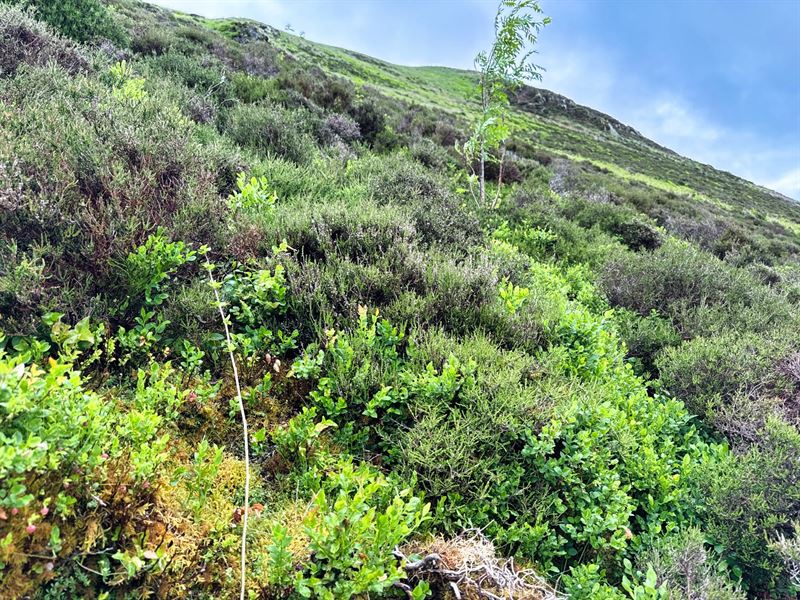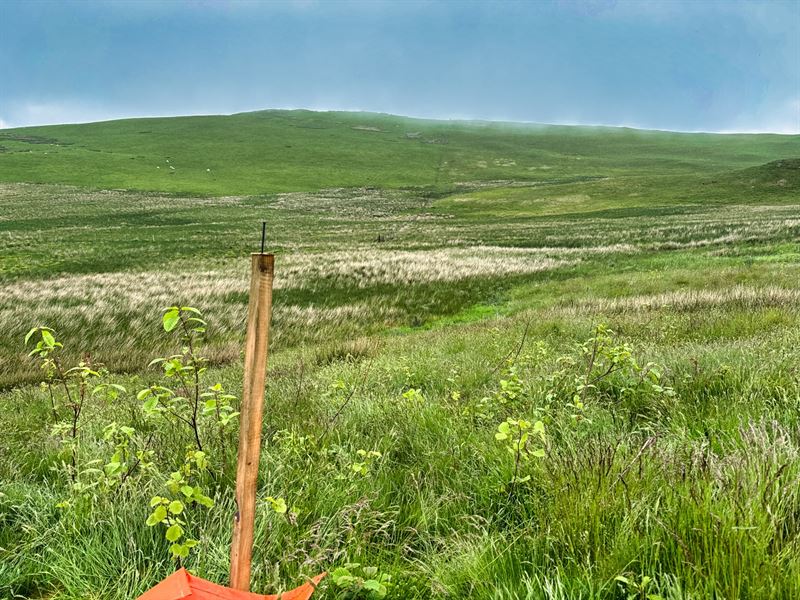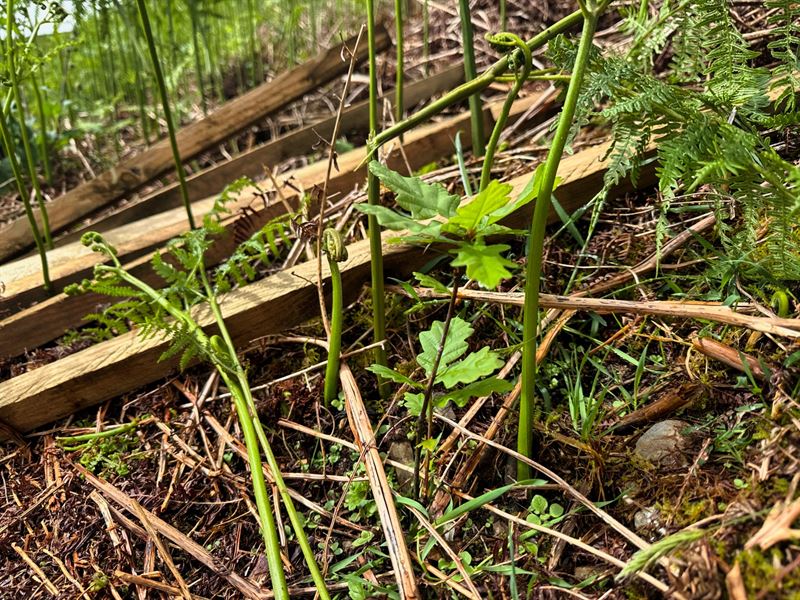A Growing Investment: Evaluating the Economics of Funding Woodland Creation at Low Fell through the England Woodland Creation Offer
Background
Low Fell is a 64-hectare (158-acre) site of upland heath on brown earths, situated to the northwest of Loweswater, within the Lake District National Park boundary. The site is owned by Buy Land Plant Trees, a Community Interest Company set up with the aim of creating sustainable landscapes by planting mosaics of plant species on land which has been abandoned or is difficult to make agriculturally productive. A variety of interventions across the Low Fell site have been made, ranging from blanket bog enhancement, mire restoration, willow copses along water courses, and woodland creation.
This case study provides an analysis of the funding and actual costs of capital establishment works, excluding fencing. We acknowledge this is only part of the picture, however focusing on the key costs of establishment clearly demonstrates the concept that we would like to highlight - If this method of establishment can create the required outcomes in a more sustainable manner, then it should be fully funded, and incentivised above more carbon intensive methods, under the England Woodland Creation Offer (EWCO).
Woodland creation intervention
Buy Land Plant Trees have a natural process inspired approach to afforestation summarised by: the minimal use or absence of plastic, pesticides and deer fencing; and a focus on very high-density patches of tree planting (cluster planting with no tubes or stakes) to protect against browsing pests such as voles, hares and deer.
Buy Land Plant Trees was awarded a grant from the Forestry Commission under the England Woodland Creation Offer (EWCO) in October 2023 to plant trees across 3 compartments of the site (13.92 hectares net planting area), inaccessible to machinery, for the benefit of nature recovery, water quality and flood risk. The total grant awarded for the supply and planting of trees was £59,856. The total number of trees funded was 34,800 based on a density of 2,500 stems per hectare (the maximum stocking density funded by EWCO).
The total number of trees planted across the 3 compartments is 169,795 (135,000 trees planted in the 2023/2024 season and 34,795 trees to be planted in the 2024/2025 season) at a stocking density of 12,198 stems per hectare.



Economic analysis
The potential EWCO grant funding that could have been awarded for establishing the same area using conventional methods is as follows:

The innovative cluster planting approach used by Buy Land Plant Trees does not fit the standard delivery approach set out by EWCO in terms of stocking density. Tubes, stakes, mulch mats, scarification and bracken control were not required as part of the woodland creation intervention, but this money could not be diverted under EWCO to cover further tree supply and planting. As such, Buy Land Plant Trees was awarded £59,856 for the supply and planting of trees.
The cost of the woodland creation based on the EWCO rates is as follows:

The actual cost of the woodland creation intervention will be approximately as follows:

In summary, the supply and planting of trees will cost approximately £84,000 (after donations), of which a EWCO grant of £59,856 was awarded, leaving approximately £24,144 to be funded from elsewhere, yet a grant of £210,483 could have potentially been awarded.


Call to action
The public money awarded for this woodland creation intervention was underfunded in comparison to other standard delivery approaches. In effect, Buy Land Plant Trees faced disadvantages for establishing woodland through alternative, and potentially more sustainable, methods. At Low Fell, Buy Land Plant Trees was able to draw on private finance to complete the woodland creation intervention, but this is not an option for all landowners.
If this innovative cluster planting approach is successful, the Forestry Commission and other funders should consider more flexible funding mechanisms for non-standard delivery approaches which aim to support nature recovery, improve water quality and decrease flood risk, alongside other benefits.
Potential solutions could include:
- Working on an actual cost basis for non-conventional methods
- Awarding a standard cost item for every tree planted in year 1
- Awarding a per ha payment for an outcome (e.g. Scottish Forestry Grant Scheme)
Monitoring
Cumbria Woodlands (as an independent organisation) established a baseline survey at Low Fell in 2024 and will continue to monitor the site annually to:
- record and understand the success of this type of woodland creation
- utilise the results to manage the intervention (e.g. planning beat-up)
- track changes in flora and fauna as the woodland establishes
- share the results with the wider forestry sector as a source of inspiration
- use as evidence to influence funders to consider more flexible funding options
Acknowledgements
Cumbria Woodlands would like to sincerely thank all Buy Land Plant Trees representatives for their kind cooperation and time in developing this case study.
We would like to acknowledge the efforts of the local Forestry Commission team who worked hard to fit this scheme within EWCO, the West Cumbria Rivers Trust, who helped with the application, and the Woodland Trust, who supported the scheme by providing trees.
The case study has been developed by Cumbria Woodlands under the Woodland Futures project which is funded by the Department for Environment Food and Rural Affairs (Defra) via the Heritage Lottery Fund (HLF) with match funding for parts of the project from the Woodland Trust.